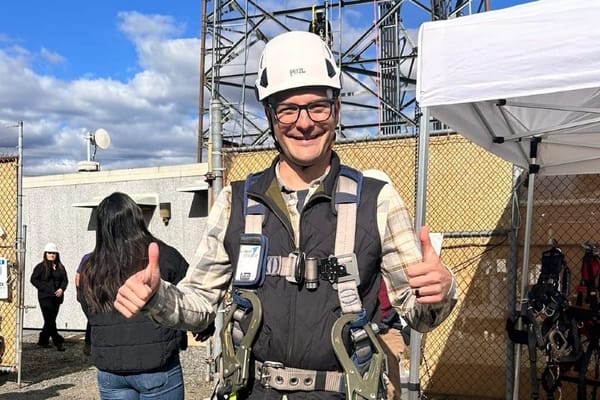Kristian Stout: Red Tape and Headaches Plague BEAD Rollout
States must overcome numerous hurdles before BEAD will be able to succeed.
Kristian Stout

As part of the $1.2 trillion Infrastructure Investment and Jobs Act that President Joe Biden signed in November 2021, Congress allocated $42.45 billion to create the Broadband Equity Access and Deployment program, a moonshot effort to close what has been called the “digital divide.” Alas, BEAD’s tumultuous kickoff is a vivid example of how federal plans can sometimes become a tangled web, impeding the very progress they set out to champion.
In the weeks since the BEAD initiative was rolled out by the National Telecommunications and Information Administration, state officials have been voicing mounting concerns over what they see as bureaucratic roadblocks to implementation. Tamarah Holmes, director of Virginia’s Office of Broadband, recently called BEAD “the most burdensome federal program” she’s ever encountered. Given that she previously worked for the U.S. Department of Housing and Urban Development, an entity notorious for extensive bureaucracy, that’s saying something.
One frequently cited problem has been NTIA’s preference for fiber-optic connections, which finds itself in tension with realities on the ground. While fiber connections often provide the best solution, implementing them can be challenging in rough terrain and remote areas. Other technologies like fixed wireless and satellite often make better sense in such territories. Here, the one-size-fits-all approach that NTIA has preferred is proving detrimental to a more tailored, location-based strategy.
This should not be news to NTIA. As Sen. John Thune, R-S.D., and his colleagues noted in April, states must overcome numberous hurdles before BEAD will be able to succeed—from labor stipulations that are more prescriptive than inclusive to the program’s inexplicable favoritism for government networks over private enterprises. Coupled with requirements like the middle-class affordability option, which will essentially function as a form of rate regulation, the entire implementation push has been creaking under the weight of its own red tape.
In its initial notice of funding opportunity, NTIA also required a preference for noncontract labor when an internet service provider rolls out a network. Unfortunately, there are not nearly enough fiber-optic technicians available in the United States to keep up with the demand created by BEAD. Thus, creating impediments to quickly bringing technicians online only saddles the program with further costly problems.
So, where does this leave America’s ambitions of broadband equity and access?
For one, there’s a compelling need to reassess the BEAD initiative’s guiding principles. The rigidity that’s currently the program’s hallmark needs to be replaced with adaptability. Each state, with its unique geography and challenges, should be given the flexibility to chart its own digital course. The federal role should be that of facilitator, not gatekeeper or, worse still, roadblock.
Moreover, implementation should be guided by a principle of technological neutrality; preferences for particular technologies simply do not make sense. Above all, realities on the ground must shape deployment strategies, not overarching directives that may be disconnected from the local context. The impending workforce challenges must also be addressed proactively. The most obvious solution would be to remove requirements that frustrate the onboarding of technicians as expeditiously as possible.
America’s broadband aspirations will only be realized through a commitment to adaptability and putting the demands of reality ahead of political preferences.
Kristian Stout is the director of innovation policy at the International Center for Law and Economics. This piece is exclusive to Broadband Breakfast.
Broadband Breakfast accepts commentary from informed observers of the broadband scene. Please send pieces to commentary@breakfast.media. The views expressed in Expert Opinion pieces do not necessarily reflect the views of Broadband Breakfast and Breakfast Media LLC.






